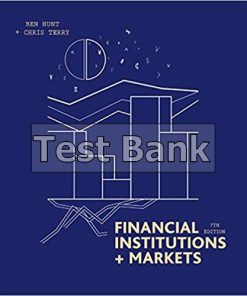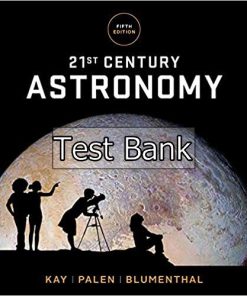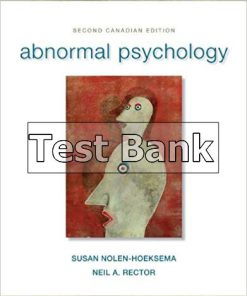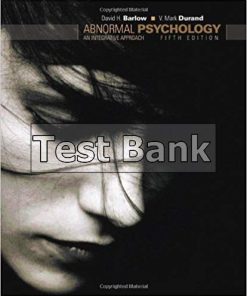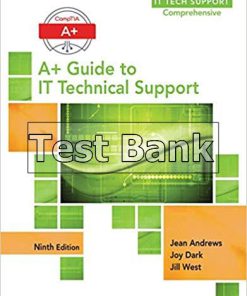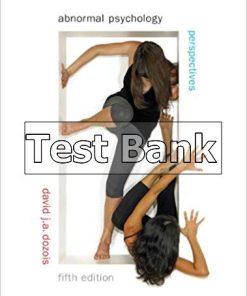Making of the West Peoples and Cultures Value Edition 5th Edition Hunt Test Bank
$26.50$50.00 (-47%)
Making of the West Peoples and Cultures Value Edition 5th Edition Hunt Test Bank.
You may also like
Making of the West Peoples and Cultures Value Edition 5th Edition Hunt Test Bank
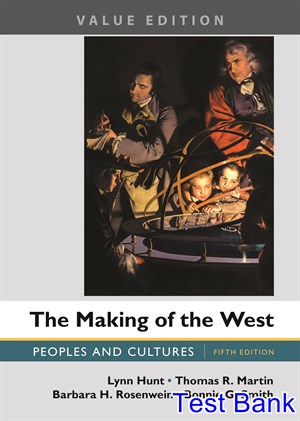
Product details:
- ISBN-10 : 1457681439
- ISBN-13 : 978-1457681431
- Author: Hunt, Lynn, Martin, Thomas R., Rosenwein, Barbara H.
Sharing the cross-cultural exchanges that shaped western history, Making of the West, Combined Volume presents a global context and chronological narrative to highlight significant moments throughout this time period.
Table contents:
Chapter 1
Early Western Civilization, 400,000–1000 b.c.e.
From the Stone Age to Near Eastern Civilization, 400,000–1000 b.c.e. b.c.e.
Life and Change in the Stone Age ■ The Emergence of Cities in the Near East, 4 –2350 b.c.e. ■ Metals and Empire Making: The Akkadians and the Ur III Dynasty, c. 2350–c. 2 b.c.e. ■ The Achievements of the Assyrians, the Babylonians, and the Canaanites, 2 –1 b.c.e.
Egypt, the First Unified Nation, 3050–1000 b.c.e.
From the Unification of Egypt to the Old Kingdom, 3050–2190 b.c.e. ■ The Middle and New Kingdoms in Egypt, 2061–1081 b.c.e.
The Hittites, the Minoans, and the Mycenaeans, 2200–1000 b.c.e.
The Hittites, 1750–1200 b.c.e. ■ The Minoans, 2200–1400 b.c.e. ■ The Mycenaeans, 1800–1 b.c.e. ■ The Violent End to Early Western Civilization, 1200–1 b.c.e.
Conclusion
Chapter 1 Review
Chapter 2
Near East Empires and the Reemergence of Civilization in Greece, 1000–500 b.c.e.
From Dark Age to Empire in the Near East, 1000–500 b.c.e.
The New Empire of Assyria, 900–600 b.c.e. ■ The Neo-Babylonian Empire, 600–539 b.c.e. ■ The Persian Empire, 557–500 b.c.e. ■ The Israelites, Origins to 539 b.c.e.
The Reemergence of Greek Civilization, 1000–750 b.c.e.
The Greek Dark Age ■ The Values of the Olympic Games ■ Homer, Hesiod, and Divine Justice in Greek Myth
The Creation of the Greek City-State, 750–500 b.c.e.
The Physical Environment of the Greek City-State ■ Trade and “Colonization,” 800–580 b.c.e. ■ Citizenship and Freedom in the Greek City-State
New Directions for the Greek City-State, 750–500 b.c.e.
Oligarchy in the City-State of Sparta, 700–500 b.c.e. ■ Tyranny in the City-State of Corinth, 657–585 b.c.e. ■ Democracy in the City-State of Athens, 700–500 b.c.e. ■ New Ways of Thought and Expression in Greece, 630–500 b.c.e.
Conclusion
Chapter 2 Review
Chapter 3
The Greek Golden Age, c. 500–c. 400 b.c.e.
Wars between Persia and Greece, 499–479 b.c.e.
From the Ionian Revolt to the Battle of Marathon, 499–490 b.c.e. ■ The Great Persian Invasion, 480–479 b.c.e.
Athenian Confidence in the Golden Age, 478–431 b.c.e.
The Establishment of the Athenian Empire ■ Radical Democracy and Pericles’ Leadership, 461–431 b.c.e. ■ The Urban Landscape in Athens
Tradition and Innovation in Athens’s Golden Age
Religious Tradition in a Period of Change ■ Women, Slaves, and Metics ■ Innovative Ideas in Education and Philosophy ■ Transformations in Sculpture, History, and Medicine ■ The Development of Public Drama: Tragedy and Comedy
The End of Athens’s Golden Age, 431–403 b.c.e.
The Peloponnesian War, 431–404 b.c.e. ■ Athens Defeated: Tyranny and Civil War, 404–403 b.c.e.
Conclusion
Chapter 3 Review
Chapter 4
From the Classical to the Hellenistic World, 400–30 b.c.e.
Classical Greece after the Peloponnesian War, 400–350 b.c.e.
Athens’s Recovery after the Peloponnesian War ■ The Execution of Socrates, 399 b.c.e. ■ The Philosophy of Plato ■ Aristotle, Scientist and Philosopher ■ Greek Political Disunity
The Rise of Macedonia, 359–323 b.c.e.
Macedonian Power and Philip II, 359–336 b.c.e. ■ The Rule of Alexander the Great, 336–323 b.c.e.
The Hellenistic Kingdoms, 323–30 b.c.e.
Creating New Kingdoms ■ The Layers of Hellenistic Society ■ The End of the Hellenistic Kingdoms
Hellenistic Culture
The Arts and Sciences under Royal Support ■ Philosophy for a New Age ■ Scientific Innovation ■ Cultural and Religious Transformations
Conclusion
Chapter 4 Review
Chapter 5
The Rise of Rome and Its Republic, 753–44 b.c.e.
Roman Social and Religious Traditions
Roman Moral Values ■ The Patron-Client System ■ The Roman Family ■ Education for Public Life ■ Public and Private Religion
From Monarchy to Republic
Roman Society under the Kings, 753–509 b.c.e. ■ The Early Roman Republic, 509–287 b.c.e.
Roman Imperialism and Its Consequences
Expansion in Italy, 500–220 b.c.e. ■ Wars with Carthage and in the East, 264–121 b.c.e. ■ Greek Influence on Roman Literature and the Arts ■ Stresses on Society from Imperialism
Civil War and the Destruction of the Republic
The Gracchus Brothers and Violence in Politics, 133–121 b.c.e. ■ Marius and the Origin of Client Armies, 107–100 b.c.e. ■ Sulla and Civil War, 91–78 b.c.e. ■ Julius Caesar and the Collapse of the Republic, 83–44 b.c.e.
Conclusion
Chapter 5 Review
Chapter 6
The Creation of the Roman Empire, 44 b.c.e.–284 c.e.
From Republic to Empire, 44 b.c.e.–14 c.e.
Civil War, 44–27 b.c.e. ■ The Creation of the Principate, 27 b.c.e.–14 c.e. ■ Daily Life in the Rome of Augustus ■ Changes in Education, Literature, and Art in Augustus’s Rome
Politics and Society in the Early Roman Empire
The Perpetuation of the Principate after Augustus, 14–180 c.e. ■ Life in the Roman Golden Age, 96–180 c.e.
The Emergence of Christianity in the Early Roman Empire
Jesus and His Teachings ■ Growth of a New Religion ■ Competing Religious Beliefs
From Stability to Crisis in the Third Century c.e.
Threats to the Northern and Eastern Frontiers of the Early Roman Empire ■ Uncontrolled Spending, Natural Disasters, and Political Crisis, 193–284 c.e.
Conclusion
Chapter 6 Review
Chapter 7
The Transformation of the Roman Empire, 284–600 c.e.
From Principate to Dominate in the Late Roman Empire, 284–395
The Political Transformation and Division of the Roman Empire ■ The Social Consequences of Financial Pressures ■ From the Great Persecution to Religious Freedom
The Official Christianization of the Empire, 312–c. 540
Polytheism and Christianity in Competition ■ The Struggle for Clarification in Christian Belief ■ The Emergence of Christian Monks
Non-Roman Kingdoms in the Western Roman Empire, c. 370–550s
Non-Roman Migrations into the Western Roman Empire ■ Social and Cultural Transformation in the Western Roman Empire
The Roman Empire in the East, c. 500–565
Imperial Society in the Eastern Roman Empire ■ The Reign of Emperor Justinian, 527–565 ■ The Preservation of Classical Traditions in the Late Roman Empire
Conclusion
Chapter 7 Review
Chapter 8
The Heirs of Rome: Islam, Byzantium, and Europe, 600–750
Islam: A New Religion and a New Empire
Nomads and City Dwellers ■ The Prophet Muhammad and the Faith of Islam ■ Growth of Islam, c. 610–632 ■ The Caliphs, Muhammad’s Successors, 632–750 ■ Peace and Prosperity in Islamic Lands
Byzantium Besieged
Wars on the Frontiers, c. 570–750 ■ From an Urban to a Rural Way of Life ■ New Military and Cultural Forms ■ Religion, Politics, and Iconoclasm
Western Europe: A Medley of Kingdoms
Frankish Kingdoms with Roman Roots ■ Economic Activity in a Peasant Society ■ The Powerful in Merovingian Society ■ Christianity and Classical Culture in the British Isles ■ Unity in Spain, Division in Italy ■ Political Tensions and the Power of the Pope
Conclusion
Chapter 8 Review
Chapter 9
From Centralization to Fragmentation, 750–1050
The Byzantine Emperor and Local Elites
Imperial Power ■ The Macedonian Renaissance, c. 870–c. 1025 ■ The Dynatoi: A New Landowning Elite ■ The Formation of Eastern Europe and Kievan Rus
The Rise and Fall of the Abbasid Caliphate
The Abbasid Caliphate, 750–936 ■ Regional Diversity in Islamic Lands ■ Unity of Commerce and Language ■ The Islamic Renaissance, c. 790–c. 1050
The Carolingian Empire
The Rise of the Carolingians ■ Charlemagne and His Kingdom, 768–814 ■ The Carolingian Renaissance, c. 790–c. 900 ■ Charlemagne’s Successors, 814–911 ■ Land and Power ■ Viking, Muslim, and Magyar Invasions, c. 790–955
After the Carolingians: The Emergence of Local Rule
Public Power and Private Relationships ■ Warriors and Warfare ■ Efforts to Contain Violence ■ Political Communities in Italy, England, and France ■ Emperors and Kings in Central and Eastern Europe
Conclusion
Chapter 9 Review
Chapter 10
Commercial Quickening and Religious Reform, 1050–1150
The Commercial Revolution
Fairs, Towns, and Cities ■ Organizing Crafts and Commerce ■ Communes: Self-Government for the Towns ■ The Commercial Revolution in the Countryside
Church Reform
Beginnings of Reform ■ The Gregorian Reform and the Investiture Conflict, 1075–1122 ■ The Sweep of Reform ■ New Monastic Orders of Poverty
The Crusades
Calling the Crusade ■ The First Crusade ■ The Crusader States ■ The Disastrous Second Crusade ■ The Long-Term Impact of the Crusades
The Revival of Monarchies
Reconstructing the Empire at Byzantium ■ England under Norman Rule ■ Praising the King of France ■ Surviving as Emperor
Conclusion
Chapter 10 Review
Chapter 11
The Flowering of the Middle Ages, 1150–1215
New Schools and Churches
The New Learning and the Rise of the University ■ Architectural Style: From Romanesque to Gothic
Governments as Institutions
England: Unity through Common Law ■ France: Consolidation and Conquest ■ Germany: The Revived Monarchy of Frederick Barbarossa ■ Eastern Europe and Byzantium: Fragmenting Realms
The Growth of a Vernacular High Culture
The Troubadours: Poets of Love and Play ■ The Birth of Epic and Romance Literature
Religious Fervor and Crusade
New Religious Orders in the Cities ■ Disastrous Crusades to the Holy Land ■ Victorious Crusades in Europe and on Its Frontiers
Conclusion
Chapter 11 Review
Chapter 12
The Medieval Synthesis — and Its Cracks, 1215–1340
The Church’s Mission
Innocent III and the Fourth Lateran Council ■ Inquisition ■ Lay Piety ■ Jews as Outcasts
Reconciling This World and the Next
The Achievements and Failures of Scholasticism ■ New Syntheses in Writing and Music ■ Gothic Art
The Politics of Control
The Weakening of the Empire ■ Louis IX and a New Ideal of Kingship ■ The Birth of Representative Institutions ■ The Weakening of the Papacy ■ The Rise of the Signori ■ The Mongol Takeover ■ The Great Famine
Conclusion
Chapter 12 Review
Chapter 13
Crisis and Renaissance, 1340–1492
Crisis: Disease, War, and Schism
The Plague Comes to Europe ■ The Hundred Years’ War, 1337–1453 ■ The Ottoman Conquest of Constantinople, 1453 ■ The Great Schism, 1378–1417
The Renaissance: New Forms of Thought and Expression
Renaissance Humanism ■ The Arts
Consolidating Power
New Political Formations in Eastern Europe ■ Powerful States in Western Europe ■ Republics ■ The Tools of Power
Conclusion
Chapter 13 Review
People also search:
the making of the west 5th edition pdf free
making of the west 6th edition pdf
the making of the west peoples and cultures volume 2
the making of the west peoples and cultures pdf
|
the making of the west 6th edition pdf free
|


